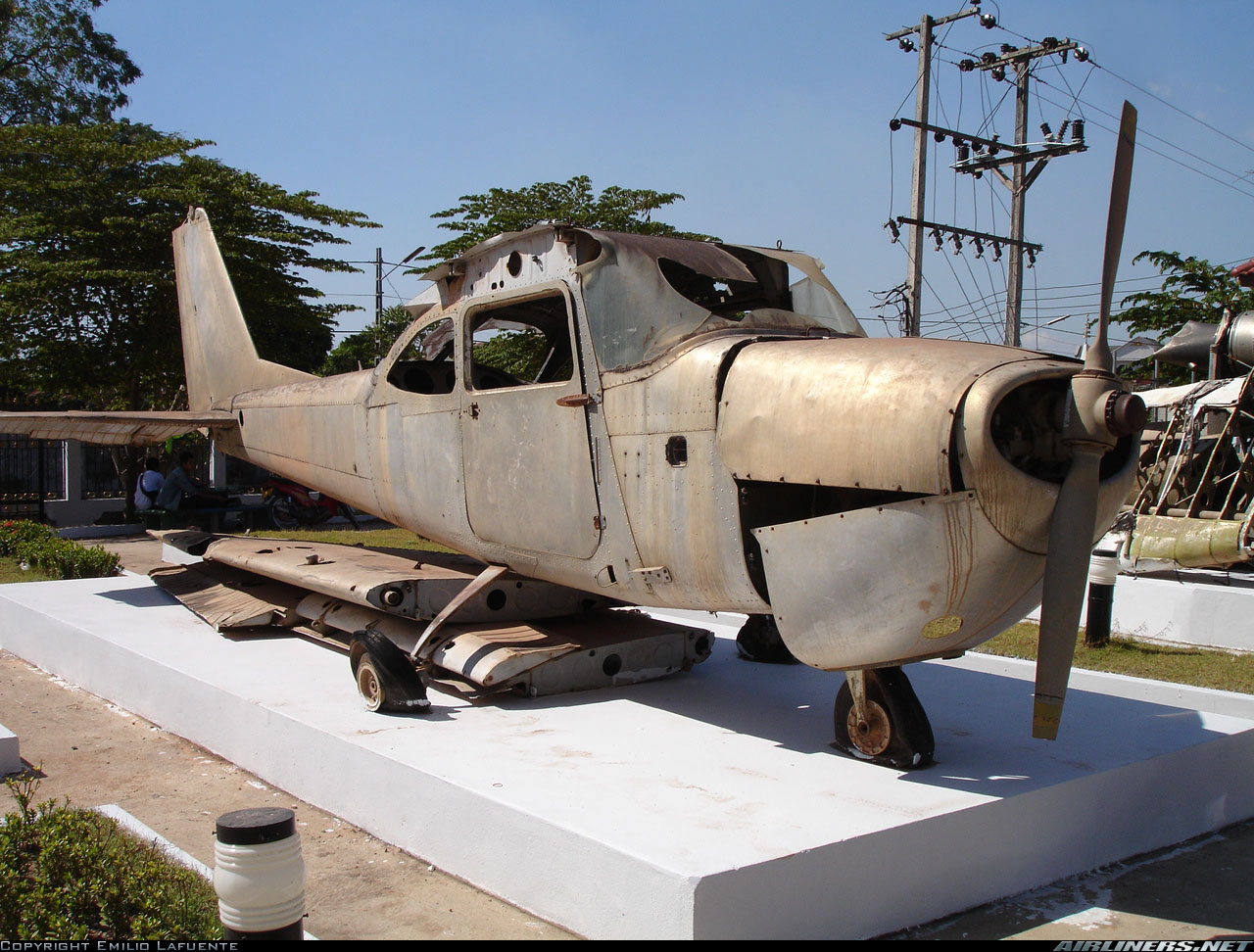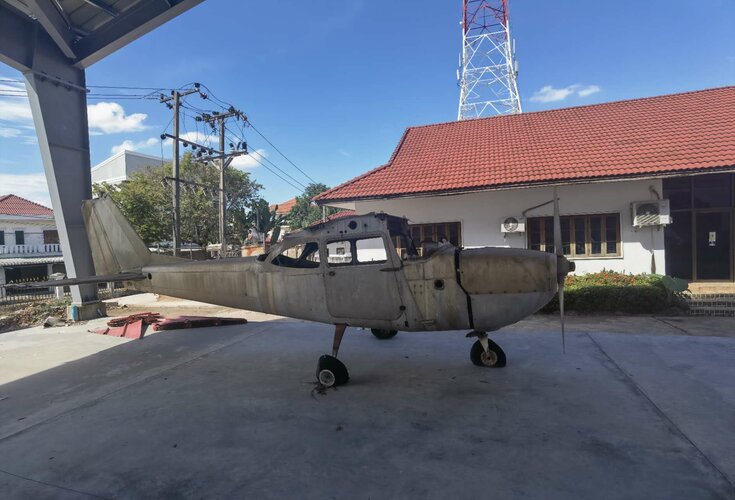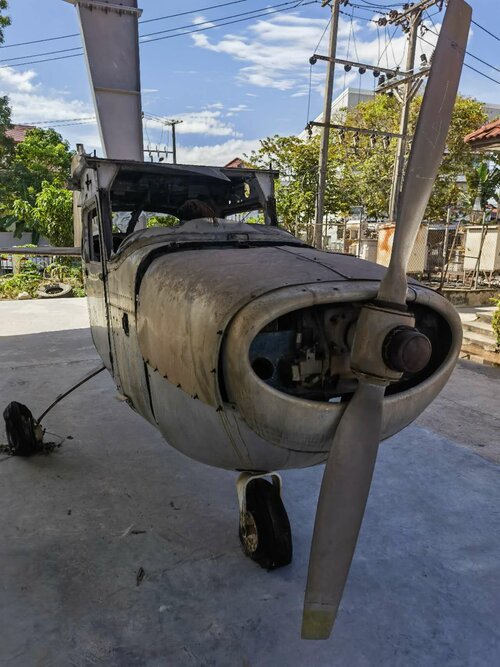You are using an out of date browser. It may not display this or other websites correctly.
You should upgrade or use an alternative browser.
You should upgrade or use an alternative browser.
Cessna T-41B Mescalero
- Thread starter Blueking
- Start date
- Joined
- 16 January 2015
- Messages
- 711
- Reaction score
- 2,507

Aviation Photo #1474183: Cessna T-41B Mescalero (R172E) - Laos - Air Force
As you can see, few salvage work has been done over this a/c shown as a war booty in Lao People´s Army History Museum, in Vientiane. - Photo taken at Vientiane [OFF AIRPORT] in Laos on December 31, 2008.
- Joined
- 11 March 2012
- Messages
- 3,016
- Reaction score
- 2,698
Given the location and provenance, this is clearly a military trainer version of the Cessna 172.
The lower rear fuselage marks it as a 172D (introduced in 1963) or later airframe.
The flat spring main landing gear legs mark it as pre-1971.
The primary reason that USAF Cessna T-41B basic trainers got larger engines is that the Us Air Force Academy is located in Colorado, 5,000 feet above sea level. They need the extra horsepower to achieve a reasonable rate of climb.
Stock civilian Cessna 172 only has 145 or 150 horsepower and a fixed pitch, aluminum propeller. Stock Cessna 172s have a "leisurely" rate of climb at sea level, which suffers when flying at higher altitudes or on floats. Even with an up-rated engine, Cessna 172 is really only a two-seater on floats.
The variable pitch propeller might identify it as a Cessna 172XP, Rheims Rocket or one of the STC up-grades to increase horsepower to 195 or 210 horsepower.
T-41B Mescalero basic trainers (ab initio) were manufactured from 1964 to 1996) and sold well to foreign air forces: Angola, Argentina, Bolivia, Chile, Columbia, Dominican Republic, Ecuador, El Salvador, Greece, Honduras, Indonesia, Iran, Khmer Republic, Kingdom of Laos, Liberia, Pakistan, Paraguay, Philipines, Peru, South Korea, South Vietnam, Thailand, Turkey and Uruguay.
The lower rear fuselage marks it as a 172D (introduced in 1963) or later airframe.
The flat spring main landing gear legs mark it as pre-1971.
The primary reason that USAF Cessna T-41B basic trainers got larger engines is that the Us Air Force Academy is located in Colorado, 5,000 feet above sea level. They need the extra horsepower to achieve a reasonable rate of climb.
Stock civilian Cessna 172 only has 145 or 150 horsepower and a fixed pitch, aluminum propeller. Stock Cessna 172s have a "leisurely" rate of climb at sea level, which suffers when flying at higher altitudes or on floats. Even with an up-rated engine, Cessna 172 is really only a two-seater on floats.
The variable pitch propeller might identify it as a Cessna 172XP, Rheims Rocket or one of the STC up-grades to increase horsepower to 195 or 210 horsepower.
T-41B Mescalero basic trainers (ab initio) were manufactured from 1964 to 1996) and sold well to foreign air forces: Angola, Argentina, Bolivia, Chile, Columbia, Dominican Republic, Ecuador, El Salvador, Greece, Honduras, Indonesia, Iran, Khmer Republic, Kingdom of Laos, Liberia, Pakistan, Paraguay, Philipines, Peru, South Korea, South Vietnam, Thailand, Turkey and Uruguay.
- Joined
- 8 January 2006
- Messages
- 1,605
- Reaction score
- 679
That's a Cessna R172 "Hawk XP" for the civilian version with the IO360 and a constant-speed prop. The civilian version also picks up the improved fuel system from the 172P and subsequent models. I should know, I was involved in that effort on the powerplant and fuel system side, "way back when".
Similar threads
-
-
-
Salvay-Stark « Skyhopper II » mystery: NOT A Cessna!
- Started by Stargazer
- Replies: 13
-
-
Cessna O-1 Bird Dog from Nam avionics
- Started by yahya
- Replies: 0


